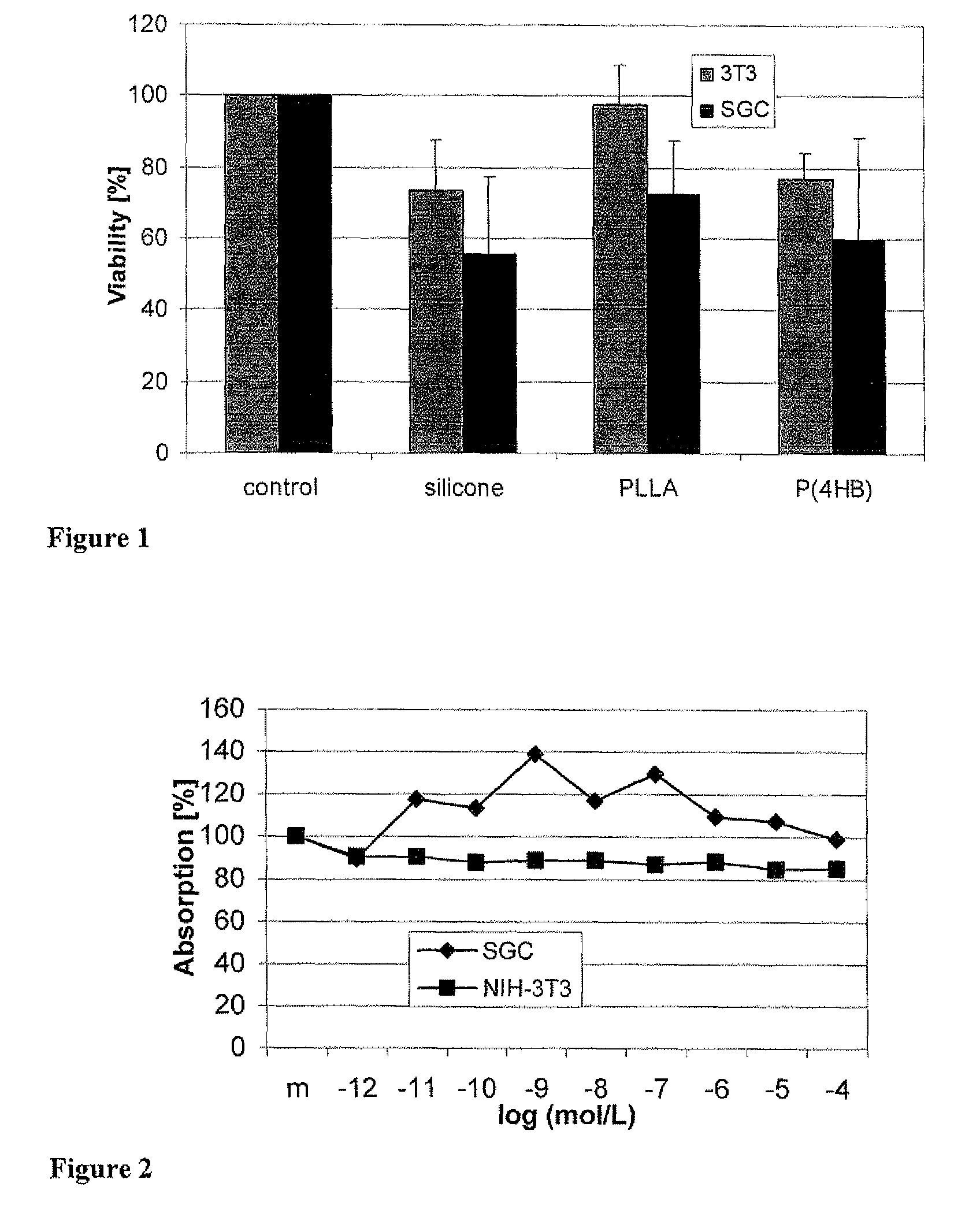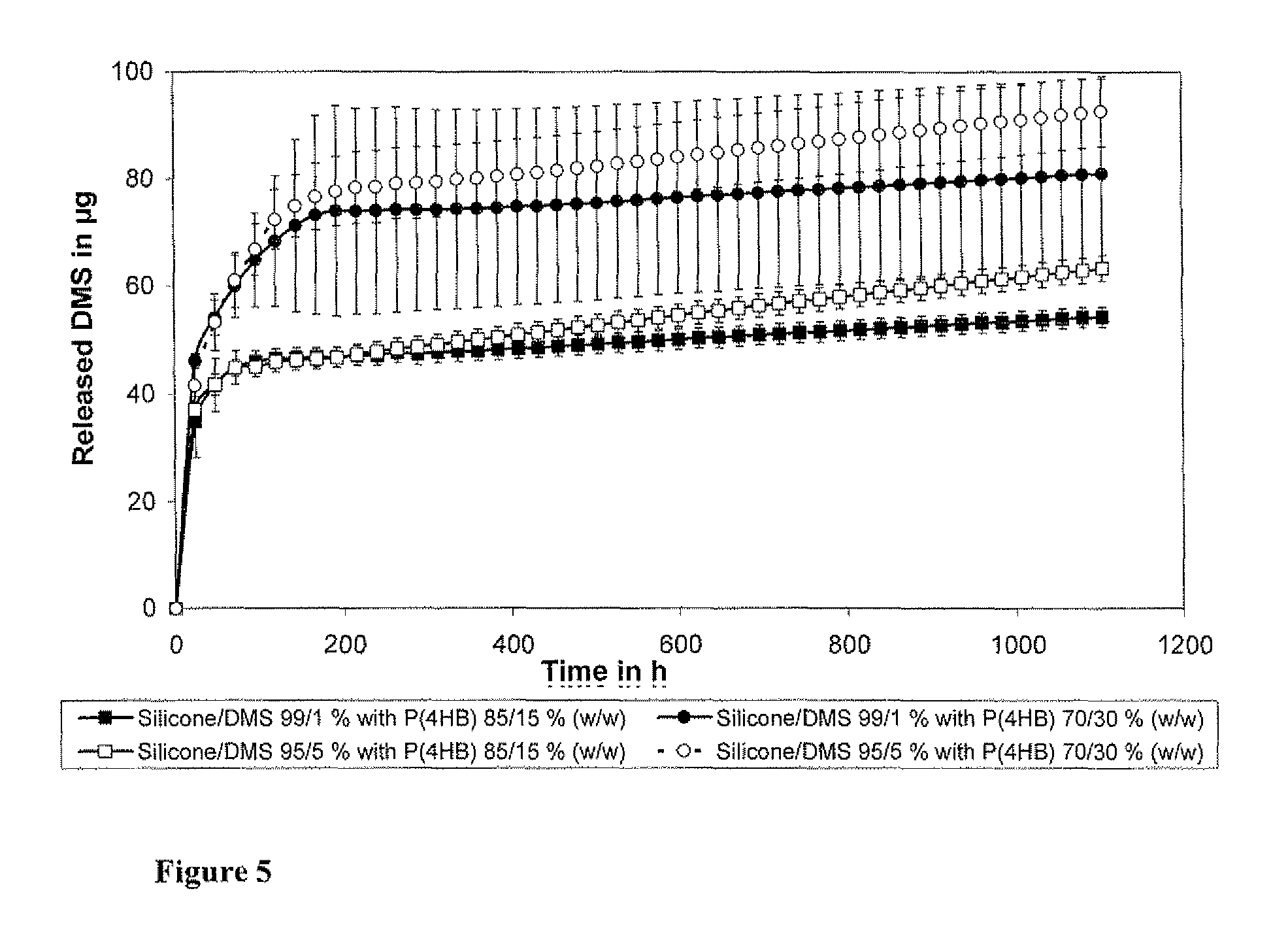Drug eluting cochlear implants
a cochlear implant and drug-eluting technology, applied in the field of implantable stimulation devices, can solve the problems of reducing the efficiency of electrical stimulation and the impedance of the electrode, and achieve the effect of reducing the survival rate of sg
- Summary
- Abstract
- Description
- Claims
- Application Information
AI Technical Summary
Benefits of technology
Problems solved by technology
Method used
Image
Examples
example 1
Measurement of Cell Viability Using Neutral Red Assay
[0059]Cell survival and viability of NIH-3T3 fibroblasts were measured using a Neutral Red Assay. NIH-3T3 fibroblasts were seeded into 96-well cell culture plates at a density of 104 cells / well in Dulbecco's Modified Eagle's Medium supplemented with 10% fetal calf serum. After 48 hours, cells were stained using a Neutral Red Assay. Neutral red is taken up only by living cells.
[0060]After incubation for 3 hours and several washing steps, cells were permeabilized and the neutral red solubilized in the supernatant. The absorption measured at 570 nm is proportional to the number of living cells. Measurements were run in quintuplicate and results were averaged. The experiment was repeated at least four times.
example 2
Cell Adsorption and Quantification of Spiral Ganglion Cells By Antibody Staining and Microscopic Evaluation
[0061]Spiral ganglion cells were freshly isolated from Sprague-Dawley rats (p3-5). Viable cells were suspended in Dulbecco's Modified Eagle's Medium supplemented with 10% fetal calf serum and 50 ng / ml BDNF and were seeded onto laminin- and ornithin-coated cell culture plates at a density of 1.5×104 cells / well. After a cultivation time of 48 hours, cells were stained with anti-neurofilament antibody and counted under a microscope. All experiments were performed in quadruplicate and the experiment was repeated four times.
example 3
In Vitro Survival of Fibroblasts and Spiral Ganglion Cells on P(4HB) and PLLA Versus Silicone
[0062]In order to evaluate the potential use of P(4HB) and PLLA as drug carriers for implantable stimulation devices, the survival rates of fibroblasts and spiral ganglion cells on these two polymers were investigated.
[0063]Discs (0.1 mm thick and 6 mm in diameter) of poly(L-lactide) (PLLA, Resomer L214, Boehringer Ingelheim Pharma GmbH & Co. KG, Ingelheim, Germany), poly(4-hydroxybutyrate) (P(4HB), Tepha, Inc., Lexington, Mass., USA) and silicone were placed at the bottom of standard 96-well tissue culture plates. Microtiter plates without material additions served as controls. Cells were seeded into each of the different cell culture wells and the assays were carried out as described above in Examples 1 and 2. For absorption measurements when using NIH-3T3 cells and neutral red test, the supernatant of all wells was transferred into new wells after permeabilization of the cells. Surviving ...
PUM
| Property | Measurement | Unit |
|---|---|---|
| diameter | aaaaa | aaaaa |
| density | aaaaa | aaaaa |
| thick | aaaaa | aaaaa |
Abstract
Description
Claims
Application Information
 Login to View More
Login to View More - R&D
- Intellectual Property
- Life Sciences
- Materials
- Tech Scout
- Unparalleled Data Quality
- Higher Quality Content
- 60% Fewer Hallucinations
Browse by: Latest US Patents, China's latest patents, Technical Efficacy Thesaurus, Application Domain, Technology Topic, Popular Technical Reports.
© 2025 PatSnap. All rights reserved.Legal|Privacy policy|Modern Slavery Act Transparency Statement|Sitemap|About US| Contact US: help@patsnap.com



